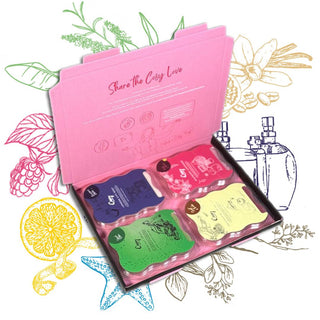One of the first things we considered when we formed Cosy Candles was what our potential customers wanted from our products. Being users of candles and wax melts ourselves, it was important to us to meet as many requirements as possible.
Before we could even think about scents, colours and branding, we faced one big question: Paraffin or Soy wax?
Paraffin has been widely used in candle making since the early 19th Century. It was discovered by Karl Von Reichenbach, a German chemist who was separating the waxy substance derived from petroleum. This discovery prompted major advances in candle making. Because paraffin provided a more reliable, cleaner burn than the previous alternatives, its popularity soared. This, coupled with the fact that it was also a lot cheaper than alternatives, meant that paraffin was the go-to wax for candles well in to the new millennium.
So, why consider another option?
Being a by-product of petroleum, paraffin isn’t a renewable resource. Air pollutants are released during the burning process which could build up in fabrics and be detrimental to your health and the environment. You may also find a build-up of a sooty substance that could cause staining of walls or the candle’s vessel.
When we considered these negative points of using paraffin wax, we decided very quickly that we wanted to give our customers a better option.
Enter...Soy wax!
The first thing to say about soy wax is that it is natural with no additives, and 100% renewable. In these current times we feel it is so important to use products from renewable sources where possible. Because soy is a vegetable wax (and vegan friendly), you can be reassured that the products are non-toxic and provide a cleaner burn. Soy wax candles will produce up to 90% less soot than paraffin candles and are completely safe around children and pets. On a practical note, because soy wax is biodegradable, any spillages are easy to clean with just soapy water.
One consideration had to be the cost of the wax we would be using. Paraffin has been used for a long time and is relatively cheap, whereas soy wax is a newer product and is more expensive to produce. With this in mind, we had to compare the performance of each wax. Whilst paraffin has a melting point of around 37degrees, soy wax has a higher melting point. Therefore, soy wax melts will burn at a slower rate, meaning it will release the aromas more gradually and they will last longer. So, despite initially being more expensive, you will achieve a longer burn time and a more effective scent throw.
And the winner is...
It became clear very quickly that using soy wax was the best option for us. Since our launch, we have received some amazing, positive feedback from thousands of returning customers, so we think we made the right decision!




